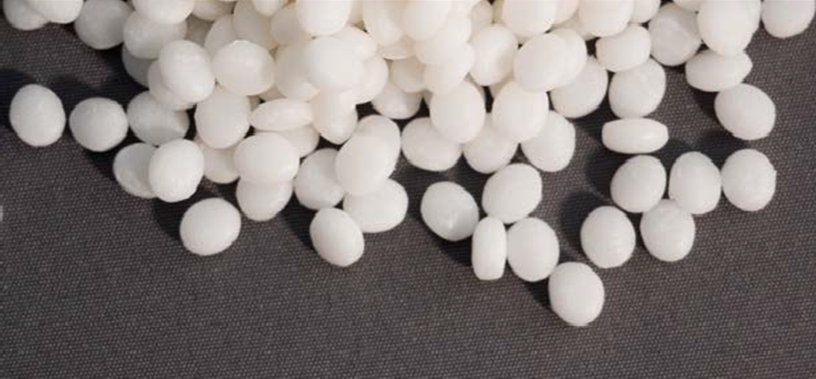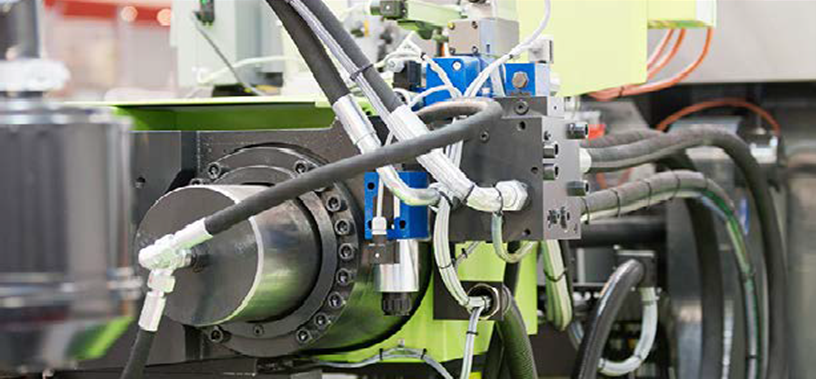The bioplastics handbook for injection molders
Reducing and eliminating plastic waste is one of the top 10 consumer trends this year, according to a report from Euromonitor. Today’s consumer is more environmentally conscious. They want to impact the world in which they live and are using their wallets to exact the change they seek — as many as 87% of consumers weigh the environmental impact of the products they purchase. Injection molders can assist their customers in meeting this consumer demand by utilizing bioplastics.
Consumers have spoken and major brands are taking note. Lego is funding research into developing bioplastic bricks. Airports and theme parks across the country are switching to compostable serviceware. And corporations like Nestlé and Unilever have created sustainability pledges, including provisions regarding the use of sustainable bioplastics for their products.
As demand grows over the coming decade, more and more products will be produced with biocomposite and biodegradable plastic materials and the bioplastics market will skyrocket to a value of $324 billion. Injection molders need to be prepared with a good baseline knowledge of processing best practices for this nascent material category.
Processing bioplastics
Bioplastics can be processed with the same equipment and, in many cases, similar cycle times as traditional plastics. As with switching from one traditional plastic to another traditional plastic (e.g., polyethylene to a polystyrene), though, it’s important to understand the processing parameters of the new material. And if you plan to use the same mold, it’s important to choose a bioplastic with similar processing characteristics to the material you’re currently using.
Because of the custom nature of our materials, material-specific processing considerations vary formulation by formulation. Still, there are category-specific processing considerations injection molders would find helpful to know before using a bioplastic.
In this guide, we offer general considerations for the two overarching bioplastic categories: Biocomposites (plastics made with a matrix resin — either petroleum-based or renewable and a reinforcement of natural fibers or fillers) and biodegradables (plastics which are metabolized into organic bio-mass after use).
Green Dot Bioplastics materials at a glance
Each of our Terratek® material lines don’t describe a discrete material, but rather a class of materials with a shared bio story. Terratek® BD, for instance, doesn’t describe one material, but a class of materials we offer that are both bio-based and biodegradable. Within the Terratek® BD category, there are near-infinite possibilities to customize a formulation by alloying different polymers and additives to meet customer-specific performance requirements.
The same could be said for the other three Terratek® lines: Flex, WC and SC. Flex is a class of biodegradable elastomers. WC is a class of wood-plastic composites. SC is a class of starch- plastic composites.
The value of Green Dot Bioplastics doesn’t lie in one material or material line, but in our material science expertise which gives us the flexibility to customize our material lines to match the unique requirements of each client.
Receive one-on-one bioplastics processing expertise
Simply request a consultation to have a conversation with one of our bioplastics experts and receive specific processing recommendations based on your equipment and material formulation.
Injection molding with biocomposites
Biocomposites can replace as much as 65% of petroleum-based content with renewable materials such as wood fibers or starch — a compelling bio story in a time when plastics bans and restrictions are heightening.
Biocomposites do not deviate significantly from traditional plastics and can be processed on the same equipment without major modifications to the injection molding process. As long as injection molders are aware of the small ways in which biocomposites differ from traditional plastics —and the small ways that difference affects the injection molding process— processing problems are easy to avoid. And as with any material change, it’s paramount to follow the processing characteristics laid out by the material manufacturer.
Lower temperatures, slower injection speeds
Biocomposites are filled with organic fillers and fibers, which are especially sensitive to high temperatures and shear buildup. If the material gets above about 400° F, there’s potential for degradation of the cellulose and burn streaks in the finished part. Changes in your process (e.g., lower temperatures, slower injection speeds) and tooling (e.g., opening a cooling line, enlarging gates) may be needed to alleviate shear stress and prevent the material from overheating.
Although injection speeds might need to be lower for biocomposites, cycle times should remain within an acceptable range because they are being processed at lower temperatures meaning less cooling time is required. And the organic filler adds a degree of dimensional stability to the material, allowing it to be removed from the mold at higher temperatures than conventional plastics and further reducing cycle times.
Follow drying recommendations
The organic fillers (e.g., starch, wood, corn, etc.) in a biocomposite readily absorb moisture from the environment and must be dried in a desiccant dryer prior to processing. Processing biocomposites at moisture levels above about 0.5% can result in a host of processing problems such as drooling from the nozzle or runner and the formation of voids within the part.
Account for differing shrinkage characteristics
The higher the ratio of organic fiber and fillers in a biocomposite, the lower the shrink rate. Injection molders who currently make a part out of a traditional plastic (e.g., polyethylene) and want to switch to a biocomposite (e.g., a wood fiber polyethylene composite) need to be conscious of the differing shrinkage characteristics between the two materials. A higher shrink rate isn’t necessarily good, and a lower shrink rate isn’t necessarily bad. But molds are designed with draft angles to accommodate the shrinkage of one plastic material — and if you want to use the same mold for the new material, you need to choose a material with a similar shrink rate.
Biocomposite materials from Green Dot
Our lines of biocomposite materials, Terratek® WC and Terratek® SC, replace a significant portion of traditional plastic with renewable, reclaimed organic fillers. The organic material adds dimensional stability, stiffness and a natural appearance to plastic products without sacrificing performance or processability.
Terratek® WC | Wood-plastic composites
A line of wood-plastic composites (WPC) containing up to 60% wood particles, reducing the ratio of petroleum plastics and giving products an aesthetically pleasing wood look. Learn more
Terratek® SC | Starch-plastic composites
A line of starch-plastic composites (SPC) with starch-to-plastic ratios ranging from 30 to 65%. Terratek® SC50 and SC65 are certified under the USDA BioPreferred Program. Learn more
Custom Terratek® biocomposite formulations
At Green Dot, we have the material science and plastic processing expertise to customize a biocomposite formulation to meet your processing and performance requirements. Learn more
Our biocomposites
A quick comparison*
Below, we compare a couple formulations in the Terratek® WC and Terratek® SC lines to show the breadth of properties possible within each category.
Terratek® SC Terratek® WC
| Specific Formulation* | SC50 | SC200500 | WC100300 | WC200350 |
| Suitable for injection molding | Yes | Yes | Yes | Yes |
| Specific gravity (g/cm3) | 1.096 | 1.05 | 1.01 | 1.055 |
| Shrinkage (in/in) | 0.011 | 0.014 | 0.004 | 0.005 |
| Melt index (g/10 min) | 31.1 | 17.5 | 9.4 | 62.8 |
| Tensile strength (psi) | 4,174 | 3,228 | 2,739 | 4,866 |
| Tensile modulus (psi) | 375,826 | 281,295 | 364,487 | 533,032 |
| Elongation (%) | 2.17 | 4.07 | 3.83 | 3.22 |
| Notched Izod / impact strength (lb / in) | 0.44 | 0.4 | 1.08 | 0.74 |
| Flex strength (psi) | 7,893 | 6,908 | N/A | 8,532 |
| Flex modulus (psi) | 330,592 | 255,982 | N/A | 344,063 |
| Processing temperature | Rear: | Rear: | Rear: | Rear: |
| 350°F to 360°F | 350°F to 360°F | 350°F to 360°F | 350°F to 360°F | |
| Middle: | Middle: | Middle: | Middle: | |
| 350°F to 360°F | 350°F to 360°F | 350°F to 360°F | 350°F to 360°F | |
| Front: | Front: | Front: | Front: | |
| 360°F to 375°F | 360°F to 375°F | 360°F to 375°F | 360°F to 375°F | |
| Nozzle: | Nozzle: | Nozzle: | Nozzle: | |
| 360°F to 375°F | 360°F to 375°F | 360°F to 375°F | 360°F to 375°F | |
| Mold: | Mold: | Mold: | Mold: | |
| 60°F to 170°F | 60°F to 170°F | 60°F to 170°F | 60°F to 80°F | |
| Moisture threshold (%) | 0.5 | 0.5 | 0.5 | 0.5 |
*This data reflects specific formulations of each category. Physical properties and processing parameters can be customized formulation by formulation.
Injection molding with biodegradables
In our experience, the vast majority of processing problems experienced by injection molders with biodegradable plastics stem back to moisture and temperature. Processing biodegradable plastics at above the recommended temperature will cause the material to degrade. And if excess moisture is present, the resulting parts will be brittle, weak and have a reduced shelf life.
If all processing recommendations are followed, though, the biodegradable plastic will remain strong and functional until subjected to the specific conditions in which it is designed to biodegrade. Most often, this is in industrial composting facilities, marine environments or backyard composting settings — not while a product is on a store shelf or in use.
Drying time and moisture levels
It’s essential to follow the drying instructions specified by the material manufacturer to ensure the material is at or below the recommended moisture level prior to processing. Moisture levels above 0.1% will not only cause problems during the injection molding process (e.g., foaming, drooling, voids) but also product performance problems. The presence of excess moisture can cause the plastic to hydrolyze during the product lifecycle, resulting in a loss of molecular weight and mechanical performance. This can cause parts to be brittle and weak and, ultimately, fail.
Lower processing temperatures
Biodegradable plastics tend to be more shear-sensitive and have lower melting points than most biocomposites and traditional plastics. Because of this, biodegradable materials have to be dried and processed at much lower temperatures, often well below 350° F. Processing biodegradable plastics above the manufacturer recommended temperature can result in material degradation. Slower injection speeds and larger gates / runners may be required to further reduce the temperature and shear stress depending on the mold and material you are using.
Biodegradable materials from Green Dot
Our lines of biodegradable plastics, Terratek® BD and Terratek® Flex, are certified compostable according to ASTM D6400 and EN 13432, meaning they will disintegrate within 12 weeks and biodegrade within 180 days in an industrial composting facility. Terratek® Flex materials are rubber-like and soft to the touch, while Terratek® BD materials are more rigid and similar to traditional polyolefin resins. We offer custom formulations for each category, alloying different polymers, additives and fillers to achieve a broad range of performance and processing parameters.
Terratek® BD | Biodegradable composites
A line of certified compostable plastics suitable comprised of differing ratios of natural and synthetic biodegradable polymers, bio fillers and additives. Learn more
Terratek® Flex | Biodegradable elastomers
A line of strong and pliable biodegradable thermoplastic elastomers which will biodegrade in both industrial and backyard composting environments. Learn more
Custom Terratek® biodegradable formulations
At Green Dot, we take a look at the performance requirements of each client’s product and work backwards to customize a biodegradable plastic formulation that will achieve the desired results. Then we give the client specific processing recommendations based on their unique material and equipment to eliminate processing issues during production. Learn more
Our biodegradable materials
A quick comparison*
Below, we compare a couple formulations in the Terratek® BD and Terratek® Flex lines to show the breadth of properties possible within each category.
Terratek® BD Terratek® Flex
| Specific Formulation* | BD1216 | BD2114 | GDH-B1FA | FX1504 |
| Suitable for injection molding | Yes | Yes | Yes | Yes |
| Specific gravity (g/cm3) | 1.624 | 1.27 | 1.23 | 1.23 |
| Shrinkage (in/in) | 0.009 | 0.012 | 0.005 (flow direction),
0.001 (trans flow direction) |
0.0095 |
| Melt index (g/10 min) | 65 | 8 | 30.2 | 41.9 |
| Tensile strength (psi) | 4,846 | 4,815 | 665 | 1,873 |
| Tensile modulus (psi) | 414,338 | 429,531 | 3,350 | 16,097 |
| Elongation (%) | 1.94 | 1.97 | 300 | 400 |
| Notched Izod / impact strength (lb / in) | 0.32 | 1.18 | No break | 6.06 |
| Flex strength (psi) | 9,059 | 9,519 | 5,390 | 762 |
| Flex modulus (psi) | 369,272 | 374,486 | 19,500 | 16,097 |
| Processing temperature | Rear:
330°F to 350°F |
Rear:
350°F to 360°F |
Rear:
300°F to 329°F |
Rear:
300°F to 329°F |
| Middle: | Middle: | Center: | Center: | |
| 340°F to 360°F | 350°F to 360°F | 300°F to 329°F | 300°F to 329°F | |
| Front: | Front: | Front: | Front: | |
| 340°F to 360°F | 360°F to 375°F | 300°F to 329°F | 300°F to 329°F | |
| Nozzle: | Nozzle: | Nozzle: | Nozzle: | |
| 340°F to 360°F | 360°F to 375°F | 300°F to 329°F | 300°F to 329°F | |
| Mold: | Mold: | |||
| 60°F to 80°F | 60°F to 170°F | |||
| Moisture threshold (%) | 0.1 | 0.1 | N/A | N/A |
*This data reflects specific formulations of each category. Physical properties and processing parameters can be customized formulation by formulation.
Discover more about bioplastics
Meet injection molders who have made bioplastics work
These four injection molders provide valuable and promising insights on working with bioplastics. Although each had technical issues at the initial stages, they were eventually able to run the materials successfully in their respective facilities. Learn more
Manufacturing with wood-plastic composites
This paper explores what designers and plastics manufacturers need to know before manufacturing a product with WPC materials. Learn more
Learn about the New Plastics Economy, a vision for a more sustainable future
This report examines the reality of our current plastic economy and explores the possibility of shifting to a circular plastics economy, where plastic products and packaging provide value long after initial use. Learn more
Compare biocomposites to traditional plastics
Biocomposites are capable of greatly reducing the amount of non-renewable feedstock going into the plastics products we use without sacrificing quality, cost or the health of the planet. Learn more
A research-driven guidebook to processing bioplastics
This guide to the processing of bioplastics gives a straightforward explanation of processing considerations for a variety of materials and processing procedures based on years of research. Learn more
Let’s have a conversation about your product performance requirements and processing equipment and develop a bioplastic material tailored to your unique needs.






